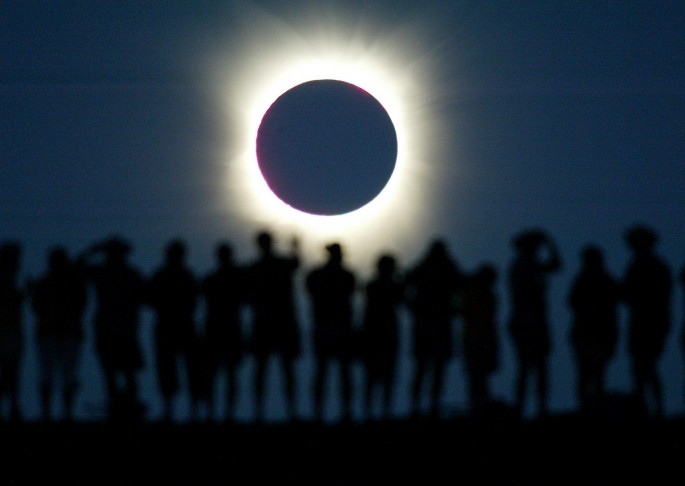April sky will host some spectacular astronomical events, including first Total Lunar Eclipse of the year 2015 and Lyrids meteor shower. Here is a guide to sky events occurring in the month of April, 2015.
Full Moon: According to Seasky.org, Full Moon will take place on April 4, 2015. The moon will be positioned exactly opposite the Earth. The event will reach its peak phase at 12:05 UTC. This Full moon is also known as Full Pink Moon, Sprouting Grass Moon, Growing Moon, the Egg Moon and the Full Fish Moon.
Total Lunar Eclipse: Saturday sky will put up a brilliant show as Full Pink Moon rises and 2015's first Total Lunar Eclipse takes place. However, it will be third Lunar Eclipse of the Tetrad, a series of four blood moons, on Easter weekend.
According to Earth Sky, this will be shortest eclipse of the century lasting for five minutes. The eclipse begins at 11:58 UTC, reaches its peak at 12:00 UTC and ends at 12:03 UTC. The eclipse will be visible in parts of western North America, the Pacific Australia, eastern Asia and New Zealand.
New Moon: April's New Moon occurs on April 18. The astronomical event reaches its peak at 18:56 UTC. Astronomy enthusiasts are advised to watch out for the faint objects during this event as there is no moonlight to hinder the view.
Lyrids Meteor Shower: Mark your calendars! Lyrids Meteor Shower is coming later this month. The shooting star event will peak on April 22 and 23. According to Time and Date, the best time to observe the meteor shower is after April 22 midnight. It is favourable for those residing in Europe.
The abovementioned website notes that Lyrids is said to be the oldest known meteor shower. It is named after the constellation Lyra, where happens to be its radiant point-the constellation's star Alpha Lyrae or Vega.
Lyrids is an average meteor shower and it produces up to 20 falling stars. For those interested in observing Lyrids, they are advised to find a dark spot located away from city lights.



























